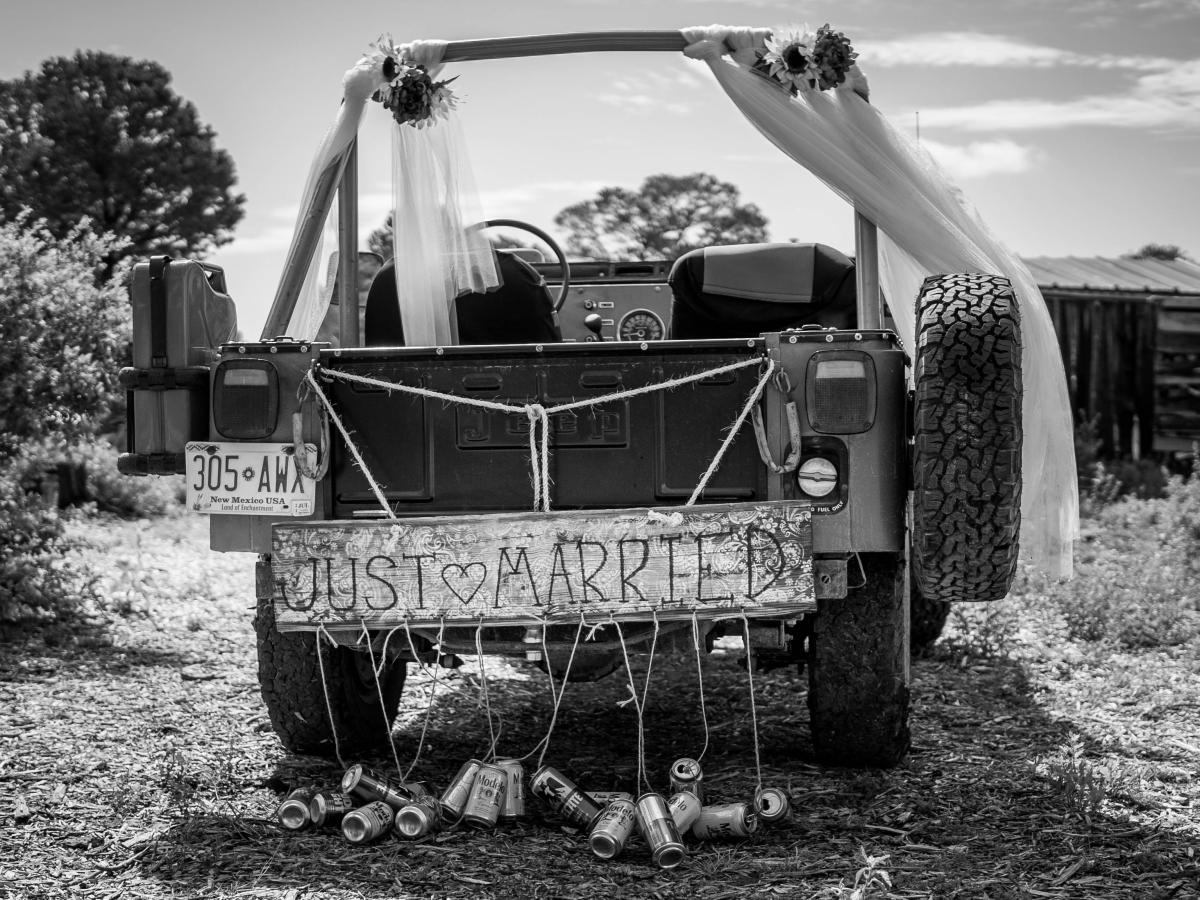Restoring antique wheels to be your wedding’s getaway car is a grand labor of love. Driving off into the night with your spouse in a sweet ride from a bygone era you revived is an incredibly romantic way to kick off your married life.
This idea is thoughtful, but its challenges may test your devotion. Should you take this road less traveled? Here are four tips to help you go about this fantasy with a dose of reality.
1. Think About Feasibility
Classic car restoration can be a grueling process. Its complexity varies from project to project, but completing the job will take hundreds of hours.
Disassembling and identifying the broken parts may be strenuous, but you can do it methodically. However, searching for and ordering replacement components can be enervating. If you rehab an old banger with elusive hardware, finding reliable aftermarket suppliers may take a long time. When you place your order, lengthy lead times will prolong your restoration.
Generally, auto restoration endeavors have flexible deadlines. Since you envision the finished product as your getaway car, consider when you want to get hitched. Restoring a classic may last indefinitely, so you may have to postpone your reservations and push back the essential dates related to your big day.
Moreover, contemplate your budget. Bringing a rusty ride back to its flashy, roadworthy self can be expensive — whether you do everything yourself or tap professional restorers. The replacement parts’ prices will add up, and you’d set aside considerable cash for contingencies.
Joining a club of vintage car enthusiasts is one of the best ways to know your restoration’s realistic timeline and cost. Some of these gearheads may be seasoned restorers who can advise you. Tell them about your plans and hear what they have to say. Networking with them may gain you connections to simplify your supplier search and shorten your project’s duration.
2. Decide Who’ll Do It
Will you be the driving force behind your restoration or entrust your jalopy to a shop? How much work will you do if you’re willing to get your hands dirty? More importantly — can you do it?
Be honest about your competency. Even discerning motorheads know they can only do some car repairs without a mechanic’s help. Car restoration is specialized work, so you’ll have to acquire new skills as a first-time restorer. However, learning the ropes until you can complete the job to the highest standards will take an extraordinary amount of time.
Speaking of which — how many hours per day and days per week can you commit to tinkering with your car? Accomplishing such a mammoth undertaking on a tight deadline is a race against time requiring nearly constant work. If you have a regular job, your availability will inevitably affect your restoration schedule.
Recognize the amount of energy this project entails. Automobile restoration is so laborious even Vin Diesel and Dwayne Johnson might find it taxing. It can be a one-person job, but a crew will work faster than an individual.
Furthermore, consider how much real estate you have at your disposal. You need to have a roomy work area and dedicate a significant portion of your garage to storage since your vehicle will mostly be in multiple pieces.
Lastly — do you have the patience to see it through? Strong enthusiasm drives you to get this show on the road, but you’ll need unwavering motivation to finish it.
The combination of competency, time, energy, space and patience is the most important determiner of who should handle the job. Honest individuals are aware of their limitations and know when to delegate. After all, getting your getaway car restored ASAP is the ultimate goal.

3. Use Quality Tools
If you think you’re up to the task, you’ll need a deep tool arsenal. It includes air tools, hand tools and power tools. In addition, the following should be on your shopping list:
- Auto jig
- Battery tender
- Bolts and fasteners
- Breaker bar
- Car wheel dollies
- Code scanner
- Creeper
- Engine, transmission and jack stands
- Dent puller
- Grinder
- Handheld work light
- Lift
- Load leveler
- Paint stripper
- Sheet metal scissors
- Sockets
- Timing light
- Trim fastener remover
- Torque and open-ended wrenches
- Volt meter
- Wire brushes
- Workbench
For safety purposes, you need a fire extinguisher and a first-aid kit. To keep your workspace neat and organized, buy ample tool chests and cleaning supplies car detailers use — such as vacuums, brushes, buffers and microfiber towels.
Car restoration gear comes at different price points, but select the most expensive options if your budget permits. Buying or renting high-quality tools will go a long way, for they’re durable and reliable. Cheaper ones may quit on you after just a few uses and disrupt your momentum.
4. Take Note of Everything
An excellent classic car restorer is a stickler for details because meticulously documenting everything is half the battle. Take as many photos and videos as possible to retrace your steps when you forget which component should go where.
Segregate tiny pieces of hardware in resealable bags after disassembly. Use markers and notecards to write descriptive information about them. The more specific your labeling is, the simpler the reconstruction stage.
Is DIY Classic Car Restoration Worth It?
Only you can say “yes” to this question. Whichever way you go, the important thing is you understand what you’re getting into to set your expectations accordingly and make the right decision.

Author Bio: Oscar Collins is the editor-in-chief at Modded, where he writes about a broad spectrum of topics. Follow him on Twitter @TModded for frequent updates on his work.
are you a bride or groom-to-be?
We'd love to plan with you on weddingday-online.com. Let's get started!
are you a wedding extraordinaire?
Join WeddingDay Magazine in inspiring brides by partnering with us! See how here.








Join the conversation
Log in or register to post comments